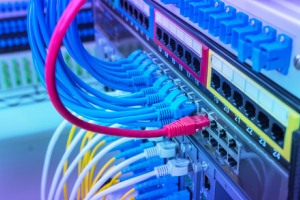Fibre and cable networks are dominating the global broadband market, with the technologies now servicing 77% of fixed subscriptions, new figures from Point Topic have revealed. According to the Global Broadband Statistics, which take into account subscriptions up to the end of 2017, more than 50% of people in more than 40 countries, including Singapore (97%), China (89%), United States (87%), and the UK (55%), are connected via full-fibre, fibre-fed copper or cable.
Speaking exclusively with the Broadband Forum, Point Topic research director Dr Jolanta Stanke said: “We are finding that customers across most global regions increasingly prefer faster broadband services delivered over fibre and cable platforms, as opposed to ADSL. This trend will continue as more bandwidth-hungry young consumers become paying decision makers, even though superfast 4G LTE and 5G mobile broadband services will compete for their wallets.”
Fibre-fed subscriptions – including Fibre-to-the-Home (FTTH), Fibre-to-the-Building (FTTB), Fibre-to-the-Cabinet (FTTC),Very High Bitrate Digital Subscriber Line (VDSL), VDSL2 and Gfast – accounted for 57% of broadband subscriptions, with more than 530 million connections. Stanke agreed VDSL and Gfast were together largely responsible for the growth that fibre has seen, with more than 30 operators across all continents deploying or trialing Gfast.

“Gfast gives operators a more cost-effective variant of fibre that will be used by operators who want to upgrade their existing networks quicker and more easily,” she added. “This could enable them to serve more customers in less densely populated areas, where direct fibre investment is less economically feasible.”
In total, cable, including hybrid fibre-coaxial, accounted for 20% of all fixed broadband connections. According to the report, the latest standard of this technology is currently deployed across several markets, being especially popular in North America, and can deliver gigabit download speeds.
Broadband Forum CEO Robin Mersh said the figures reflect the fact that new technologies that let operators deploy fibre deep into the network without having to enter buildings themselves are quickly moving from trials to mass deployment.
“If operators want to deliver competitive broadband services, maximising their investments through the use of technologies like Gfast is vital,” said Mersh. “Expanding the footprint of their existing fibre networks in this way is cost-effective and delivers the gigabit speeds consumers crave. The growing trend towards fibre, whether its fibre-fed copper or full fibre, and cable deployments highlighted by Point Topic’s report confirms that the Forum’s work on interoperability and management of ‘fibre-extending’ technologies is vitally important.”
Comment on this article below or via Twitter: @VanillaPlus OR @jcvplus






